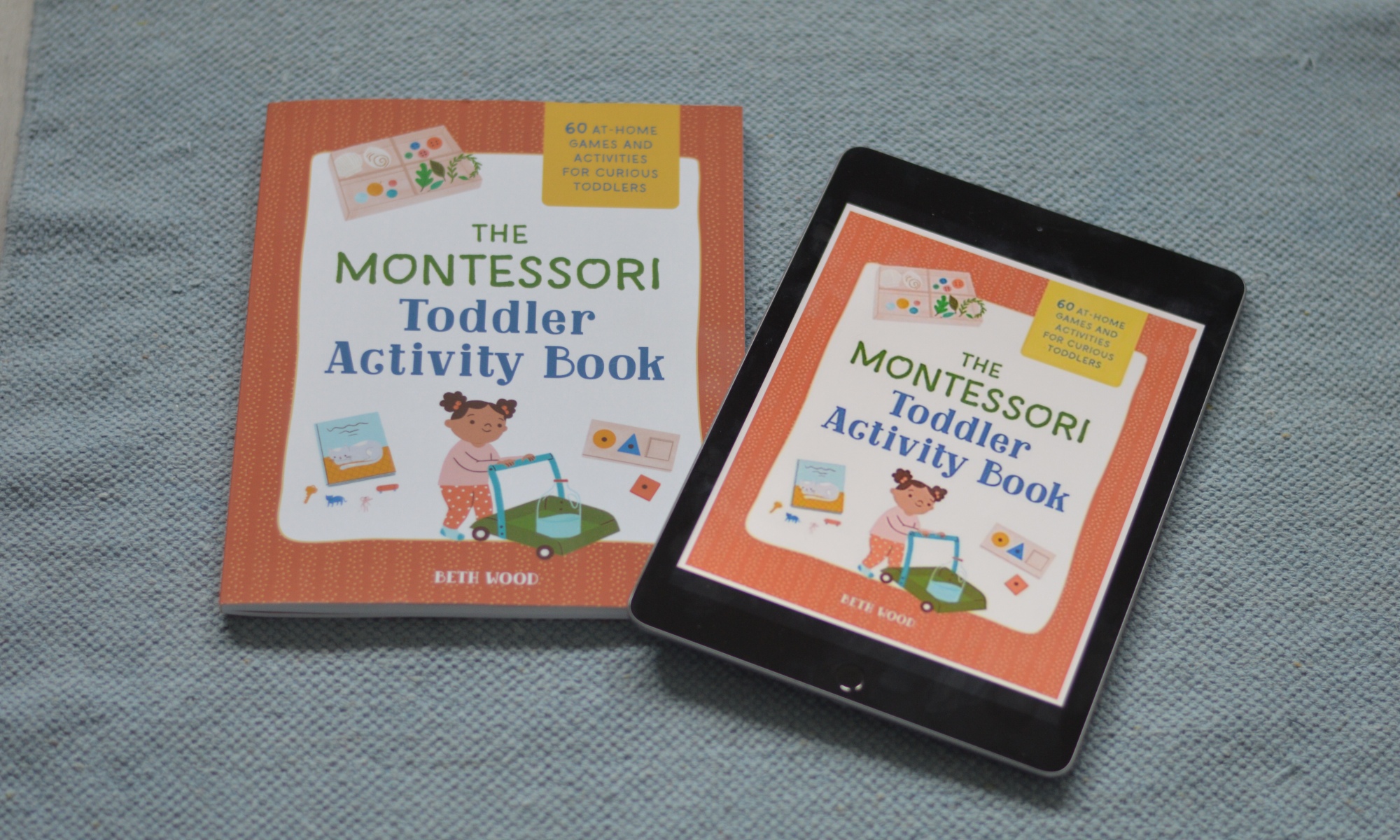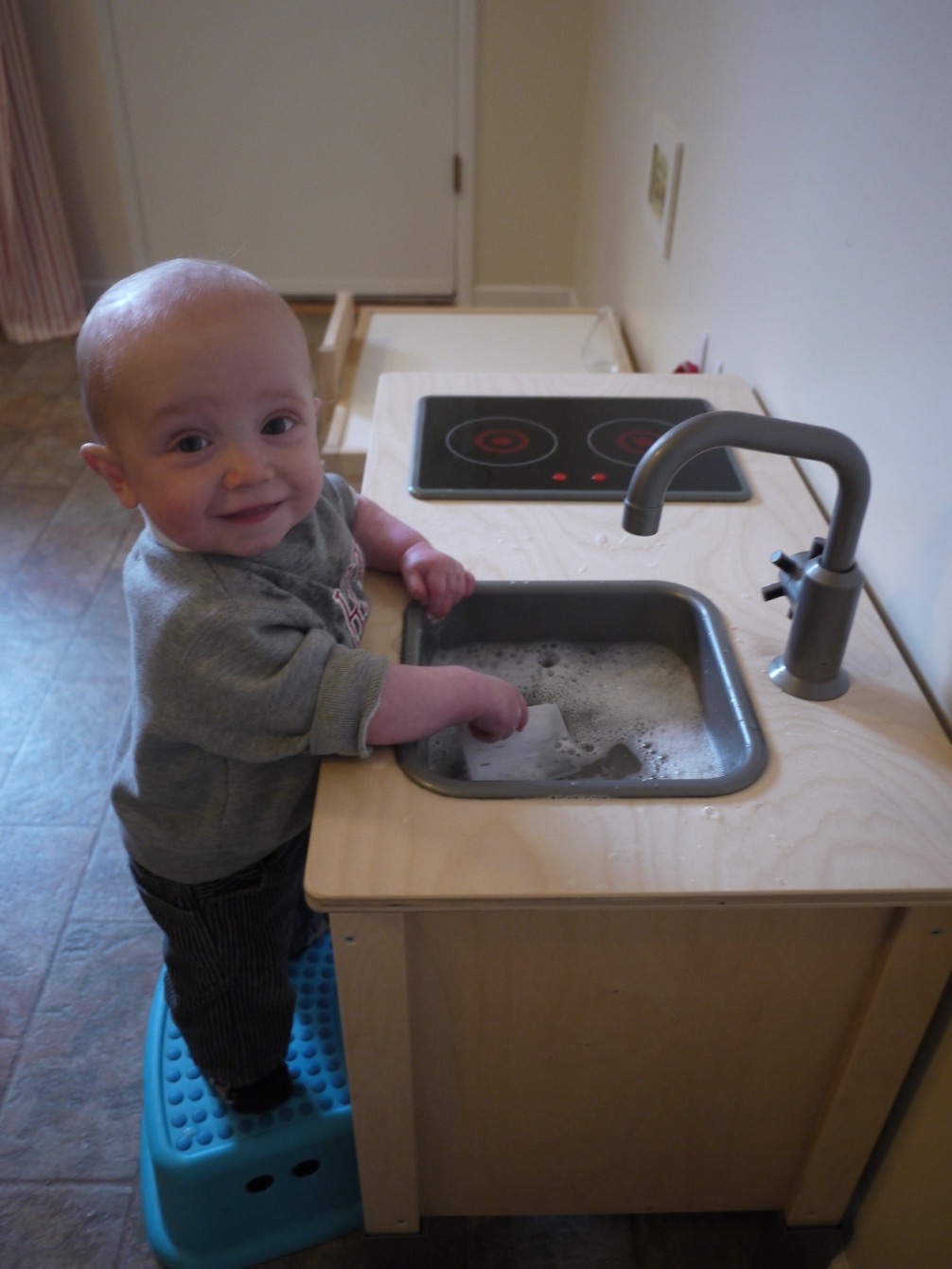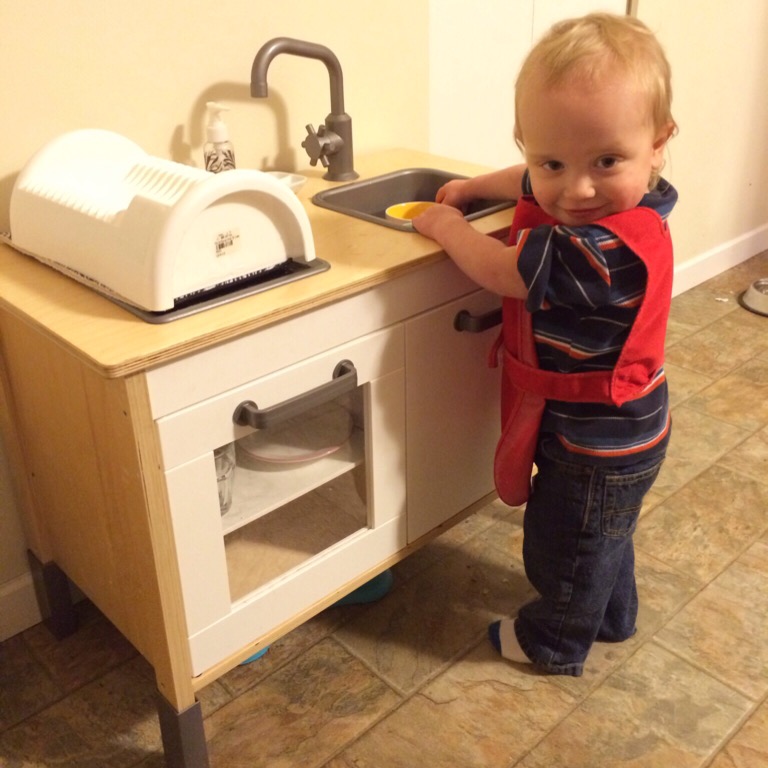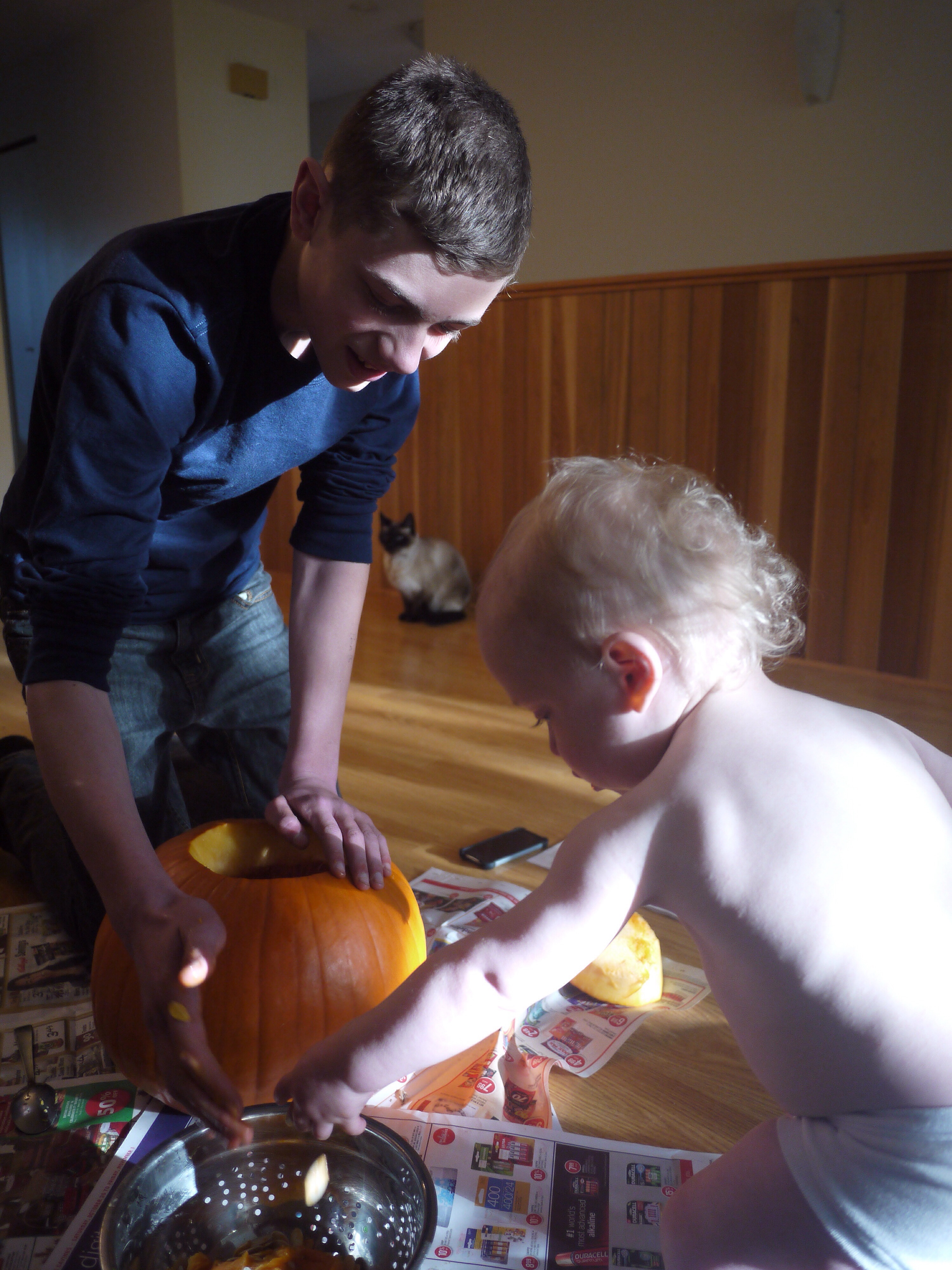This has been in the works for quite awhile and I’m excited to finally be able to say it’s almost here! If you follow us on Instagram you will likely have already seen some sneak peeks of the inside but I really wanted to give you a bit more of an in-depth tour here.

I often get asked to write Montessori related content in books and other media but I’ve never before loved the intention behind it. Maria Montessori designed a way of fostering a child’s natural development that was meant to focus on the child’s own unique interests and abilities. I really wanted to showcase how as a multi level trained Montessori teacher I use the Montessori pedagogy in my classrooms. I also wanted to showcase how I’ve used my Montessori training to create a Montessori home with our two boys. A simple and easy to use recipe book that one could grab, flip through and easily set up ideas without the need to buy expensive or excessive materials.
It was also extremely important to me that some of my most cherished facts about child development and a deeper dive into the pedagogy as a whole could be included but that it would be easy to understand and implement. I’m so happy with how it turned out.

The book begins with some Montessori information specific to toddlers. As I mention in the pages, toddlerhood can be a tricky time. Not quite the independence of a preschooler but definitely not a baby anymore!
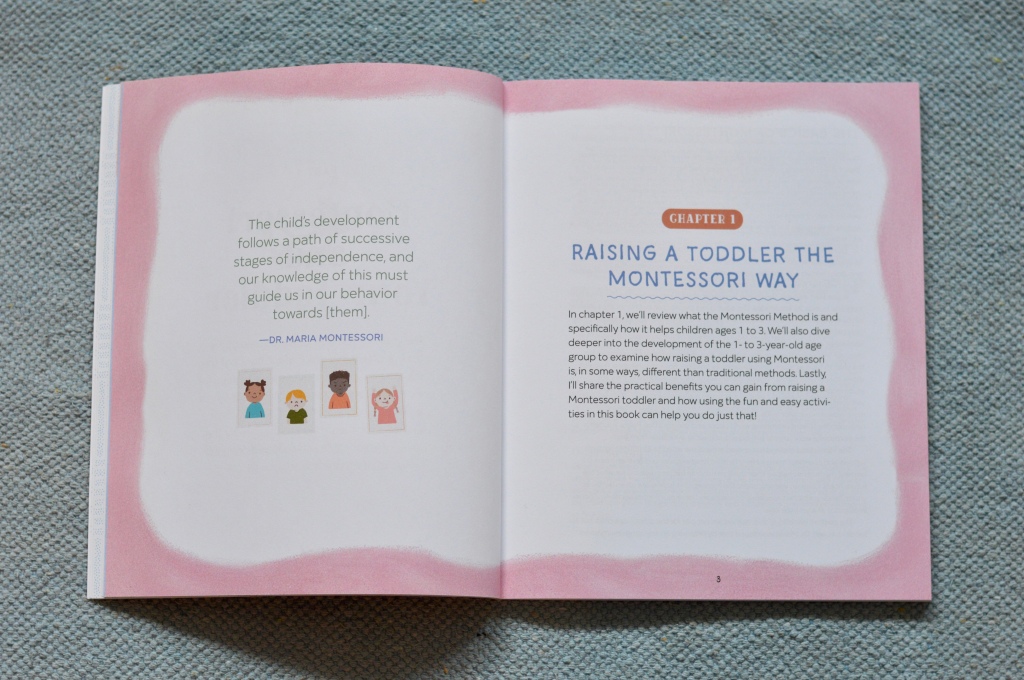
Once some key ideas about Montessori and toddlerhood are down, the next section is for the activities! I’ve broken the activities into 5 categories: Motor Skills, Art, Practical Life, Sensorial and Language.
I’ve arranged them in sequential order just like you’d find in a classroom environment from youngest to oldest. The index at the back of the book helps break down activities in age groups from 1 to 3 year olds and so it’s my hope that anyone using the book can quickly and easily find inspiration that’s age appropriate for their child.
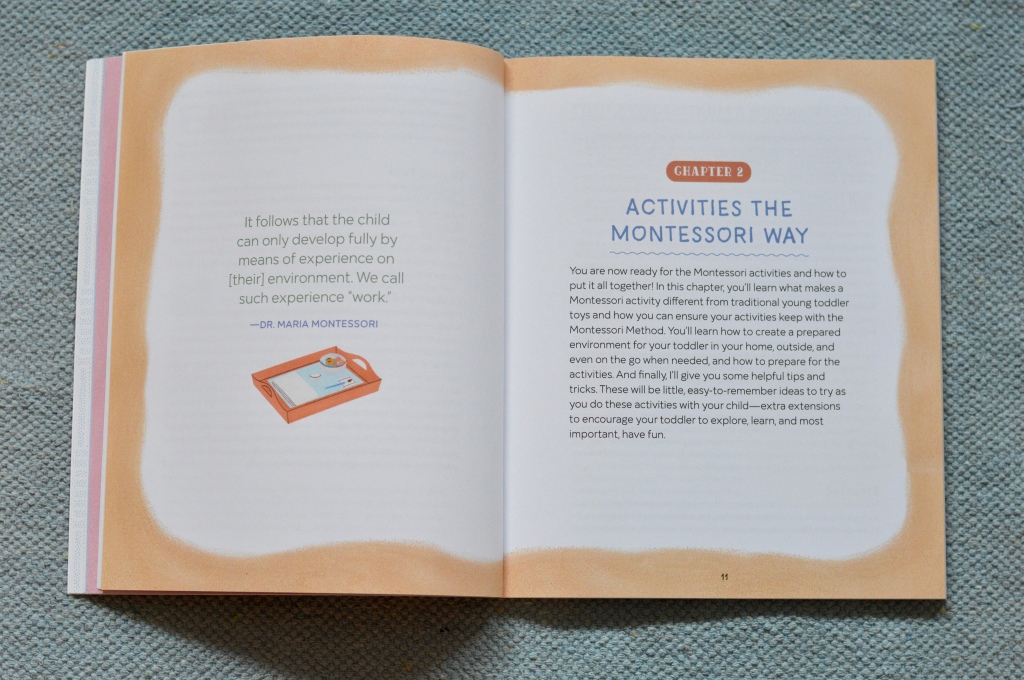

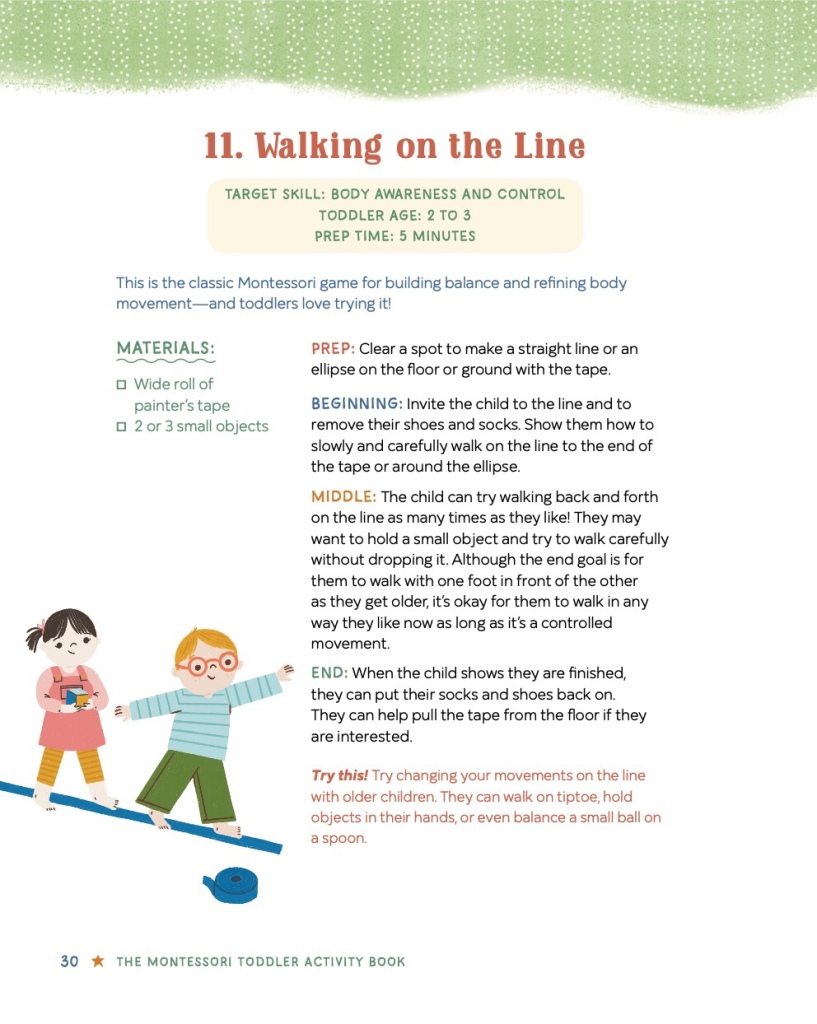
Each of the activities in all of the 5 categories are set up in an easy to implement way. The list of materials is short and each step is laid out including what skill the activity strengthens in the child and ways you can alter the activity to better fit the needs of the child doing it.
Pre-orders are already open around the world (and can be found here). I’m so thankful for everyone’s love and support through this amazing process. I’ve loved sharing the little snippets that have made up Our Montessori Life over all these years.


